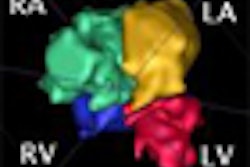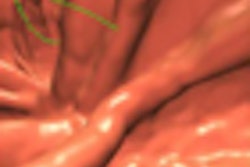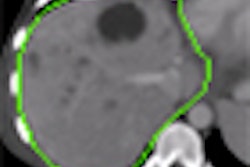Monday, November 30 | 11:00 a.m.-11:10 a.m. | SSC01-04 | Room S502AB
In this scientific session presentation, Harvard University researchers will describe their experience with applying an automated analysis of coronary CT angiography (CTA) images acquired from a sample of emergency department (ED) patients.A large number of patients present to the ED with chest pain but a low probability of significant coronary lesions due to clinical factors and a lack of prior coronary disease. Coronary CTA can offer quick and noninvasive assessment of these low-risk patients, but this tool remains underutilized, possibly due to a lack of expert readers, said presenter Dr. Girish Tyagi.
To see if computer-aided detection (CAD) software could assist a nonexpert reader in these cases, the researchers studied a commercially available CAD application (COR Analyzer, Rcadia Medical Imaging, Haifa, Israel) on 100 consecutive coronary CTAs performed in the ED. For the purposes of the study, the consensus opinion of two expert readers served as the gold standard.
In a subset of 21 coronary CTAs performed in the ED for chest pain between September 2008 and February 2009 for suspected coronary artery disease, the software showed 75% sensitivity, 93% specificity, 17% positive predictive value, and negative predictive value of 99%.
Positive automated results may require further interpretation by an experienced reader, according to the researchers.
"If reliable, [an] auto analyzer could have a beneficial role in expeditious management in this cohort of patients," Tyagi said. "Benefits include reduced need for coronary observation beds and earlier discharge of patients."




















